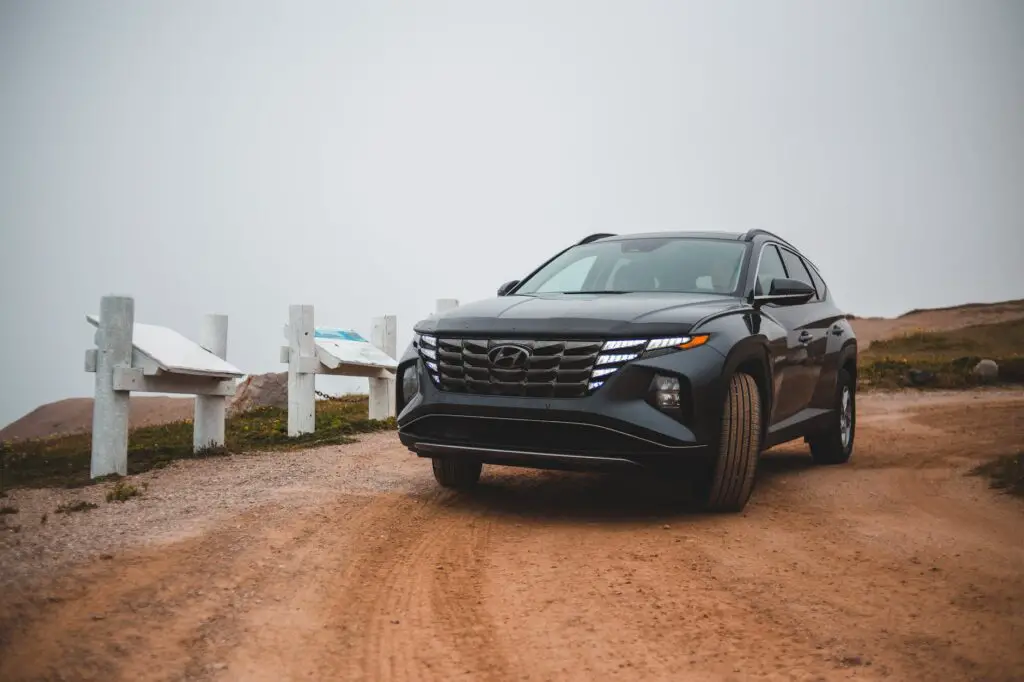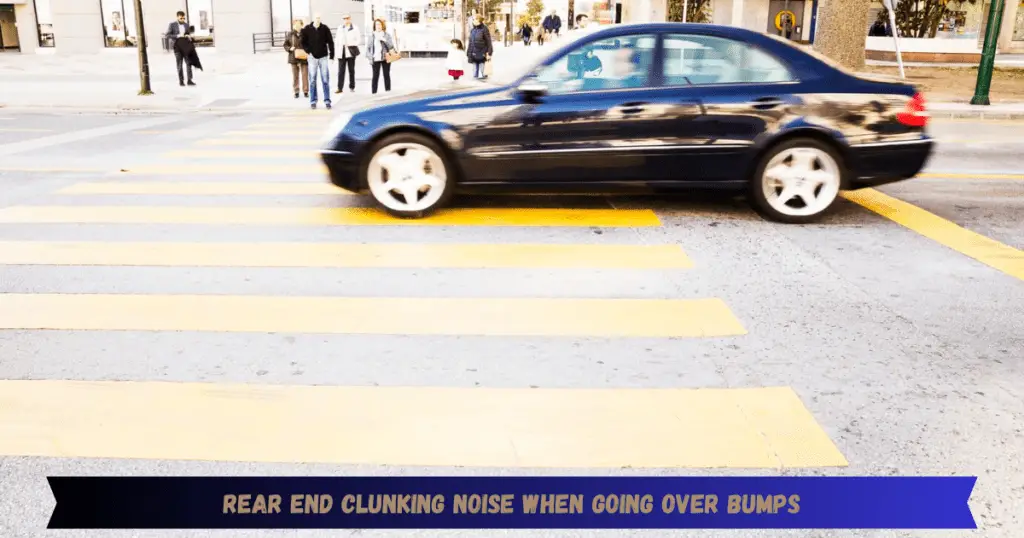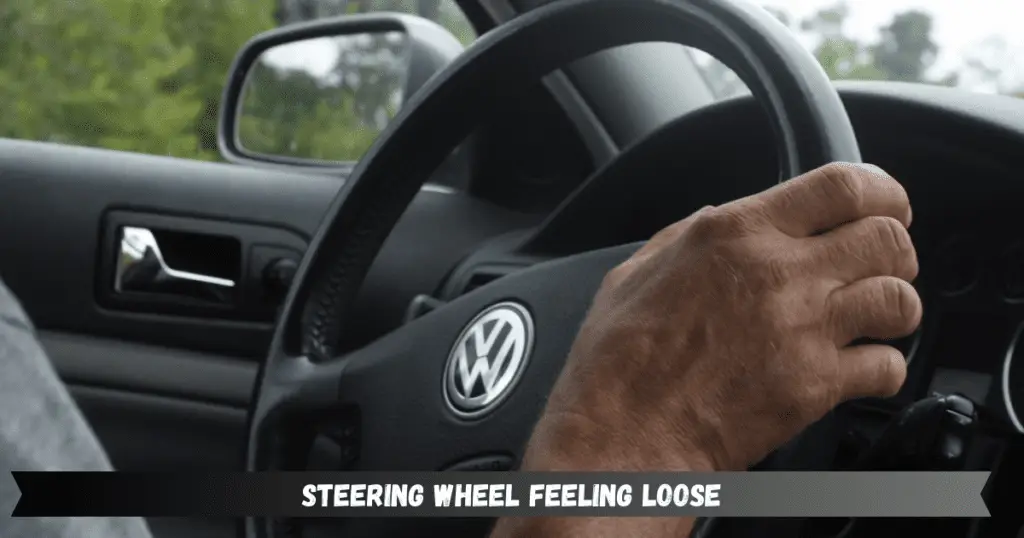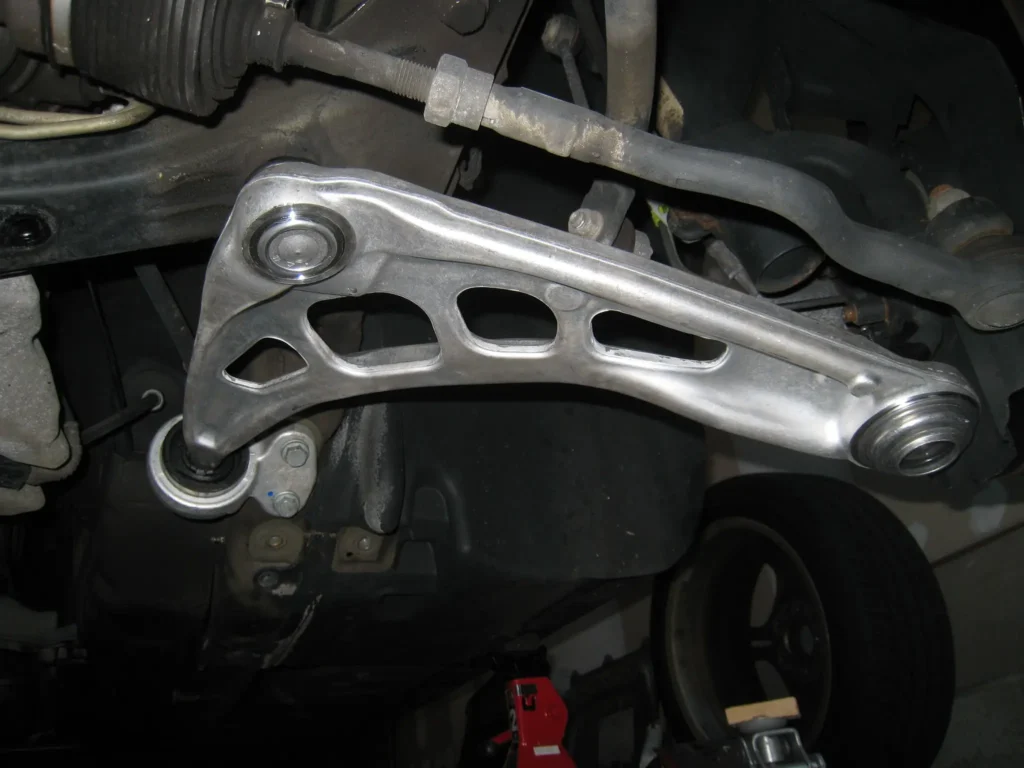Hearing a single clunk when turning noise from the front can make any driver flinch. While annoying, it signals that component wear or loosening that needs prompt attention. Identifying the root cause of Single Clunk When Turning early on reduces further deterioration and costly repairs down the road. This guide covers the full range of potential causes, repair options, and proactive maintenance for tracking down and fixing that unnerving single clunk on turns.
Typical Culprits Behind Single Clunk When Turning
A single clunk or knock occurring during low speed turns or steering reversal typically stems from these common mechanical issues:
Worn Constant Velocity (CV) Joints
CV joints connect the wheels to the transmission and provide consistent rotational velocity through a range of angles. Torn CV boots allow contaminants in to corrode the joints. This causes binding and clicking during turns as the joints struggle to rotate smoothly.
Bad Wheel Bearings
Wheel bearings allow the wheels to spin freely around the axle shafts. Excess internal bearing play introduces sloppiness that clunks audibly when changing direction.
Worn Suspension Components
Pivoting suspension parts like ball joints and bushings can click under chassis movements when cornering if they are dry and worn. Strut mounts, control arms, and sway bar links also emit clunks when damaged.
Dry Driveshaft Slip Joint
The driveshaft slip joint compensates for length changes during suspension travel. It needs regular lubrication. Dryness causes internal knocking sounds especially when accelerating through turns.
Broken Motor Mounts
Broken or torn engine mounts can clunk loudly as engine torque forces shift on the mounts during turns and gear changes.
4. Sway Bar Links
The sway bar, also called a stabilizer bar, is a horizontal bar that connects opposite wheels and helps reduce body roll of your vehicle when cornering or turning. It improves stability and handling. The sway bar end links are small components that connect each end of the sway bar to the suspension and allow the sway bar to move. Worn out or damaged end links can cause a single clunk or knocking noise when turning as the loose links hit other components. Replacing worn end links restores proper sway bar function for stability.
5. Steering Rack Issues
The steering rack is a key part of the steering system, housed along the axle. It converts the rotating motion of the steering wheel to left and right movement of the tires. The rack has socket joints at each end called tie rod ends that connect to steering knuckles on the wheels. If these rack ends become loose or damaged, it can allow play in the steering leading to a clunking or knocking sound when turning the wheel as components shift
Analyzing when and how the clunk occurs helps isolate the faulty component:
| Cause | Timing | Side | Pitch | Other Clues |
|---|---|---|---|---|
| Worn CV Joint | On steering reversal | Both sides if turning either way | High-pitched | Grease leaks, torn boots |
| Bad Wheel Bearing | Through entire turn | Single side, or both if symmetrical wear | Low pitch | Wheel wobble, play |
| Suspension Wear | During body lean | Single or both depending on part | Mid-range pitch | Cracked bushings, loose joints |
| Dry Driveshaft Joint | Accelerating out of turn | Rear driveline | Mid-range pitch | Joint is dry, dirty |
| Broken Motor Mount | On steering reversal | Engine compartment | Low, knocking pitch | Visual mount damage |
Pay close attention to the noise details so you can pinpoint the faulty part.
The Risks of Postponing Repairs
It’s very tempting to disregard an occasional single clunk when turning when you’re in a hurry to reach your destination. But holding off on investigating and fixing the cause allows rapid component deterioration that cascades into major mechanical issues:
- Compromised CV joints can totally seize up leading to catastrophic joint and axle failure.
- Excess wheel bearing play introduces dangerous wheel shimmy and wobble.
- Collapsed bushings or ball joints reduce steering precision and raise the risk of detachment.
- Unmitigated driveline play causes abrasion between components, eventually destroying the driveshaft.
- Fully detached engine mounts allow harmful engine movement, straining belts and hoses to the breaking point.
Don’t let minor annoyances snowball into major safety hazards and extensive repairs. Service clunking components before lasting damage occurs.
How to Pinpoint the Source of the Noise
Replicating the exact conditions that create the single clunk when turning is key to accurately diagnosing the underlying cause:
- Repeat the clunking in both left and right turns to distinguish if it occurs on just one side or both sides.
- Perform tight turns at crawling speeds then faster turns to determine if it happens only at low speeds or also at higher speeds.
- Accelerate out of turns while listening for U-joint or slip yoke clicking at speed.
- Brace and load the suspension before turning to isolate the noise to chassis or driveline components.
- Raise each corner while turning the wheel to distinguish wheel bearing noises.
- Carefully inspect the engine bay and undercarriage while turning the steering wheel to spot anything loose.
Methodically isolating the conditions and locations where the clunk manifests will reveal whether wheel bearings, suspension joints, driveline parts, or mounts are the culprit. Don’t just throw parts at the problem or replace components randomly.
Fixing Clunking Constant Velocity Joints
Damaged CV joints producing clunking noises require prompt servicing including:
- Replacing any torn or cracked CV boots to close up leaks if the joint looks intact. Use clamps or cut-to-fit boots depending on the tear size and location.
- Full CV axle rebuild or replacement if the joints show excessive wear and corrosion. Severely compromised joints cannot be salvaged by just replacing the boots.
- Closely inspecting adjacent components like wheel bearings and suspension joints for any collateral damage from the failed CV joints.
Catching deteriorated joints early maximizes the chance of a simple boot repair. But delaying repairs until the joints are totally compromised risks catastrophic axle failure and extensive repair costs. Don’t put it off.
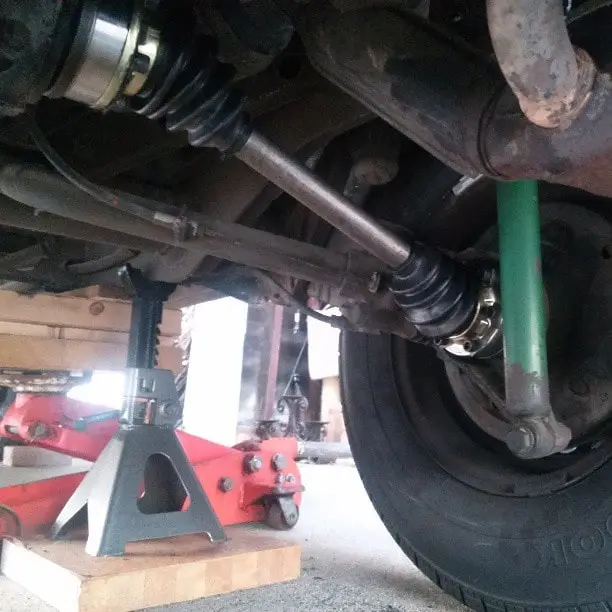
Diagnosing Bad Wheel Bearing Sounds
Damaged wheel bearings announce themselves through Single Clunk When Turning and rumbling noises. Here’s how to assess their condition:
- Check for excessive vertical and horizontal play by rocking each tire from the 12 o’clock to 6 o’clock position. Too much play indicates worn bearings needing replacement.
- Listen closely for rumbling noises accelerating out of turns. Bad bearings sound like loud road noise coming from the wheel wells.
- Inspect components like ball joints and bushings to see if collateral suspension damage has occurred from the compromised wheel bearings.
- Replace bearings in pairs on the same axle to prevent uneven wear. Don’t just swap one side if they have similar mileage.
Don’t delay rebuilding or replacing dangerously worn bearings before play introduces dangerous wheel shimmy and handling issues.
Isolating Suspension and Driveline Noises
Tracking down single clunk when turning originating from pivoting suspension components or rotating driveline parts takes attentive inspection:
- Check ball joints and tie rods by prying to check for movement indicating imminent failure. Replace any loose connections.
- Inspect bushings for cracking and dryness and replace any deteriorated pieces to renew suspension compliance.
- Ensure U-joints and slip yokes are adequately greased to prevent binding and stick slip rotation.
- Check transmission, transfer case, and side engine mounts by watching for excessive play as you rev the engine.
- Lubricate chassis points like sway bar links and track bar pivot points to renew smooth articulation.
- Examine axle shafts for mushrooming and leaks signaling internal damage.
Restoring tight precision and smooth articulation will banish suspension and driveline clunks for good. Don’t settle for loose components rattling away.
Additional Causes to Watch For Single Clunk When Turning
While the above issues represent the most common causes, here are some additional parts that can also produce single clunk when turning noises:
Worn Ball Joints
These crucial pivot points in the steering linkage wear over time. Inspect boots for tears and check for vertical play indicating slop. Replace before complete failure occurs.
Loose Tie Rod Ends
Loose tie rod ends introduce play into the steering system. Inspect the ends for excessive movement and secure or replace as needed.
General Loose Suspension Parts
Any loose components like sway bar links, control arms, and strut mounts will clunk over bumps and during cornering. Check for cracked bushings and loose fasteners. seen the brake pad light illuminated on the dash must read.
Damaged Drive Axle Joints
Similar to CV joints, worn U-joints on axle shafts can click under acceleration due to lack of grease. Bad slip yoke splines also clunk.
Bent or Broken Axle Shafts
Bent shafts produce clunks from internal slippage. Cracks leak gear oil. Inspect and replace damaged axles promptly to avoid breakdowns.
Engine Mount Inspection and Replacement
One overlooked cause of turning clunks is deteriorated engine mounts. Check by:
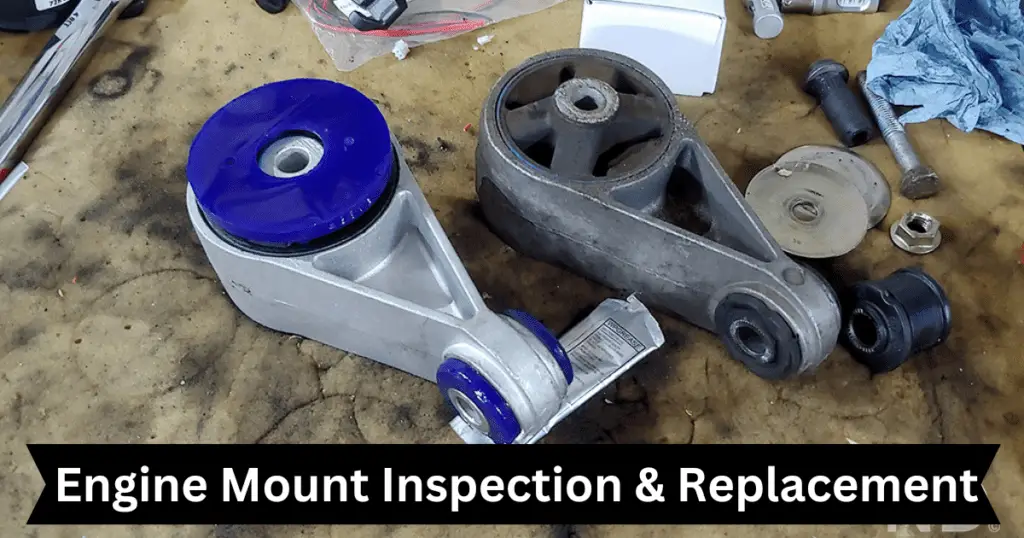

- Looking closely for cracked, split, or collapsed rubber mounts, broken brackets, and loose fasteners.
- Starting the engine and watching for excessive movement indicating the rubber has failed.
- Ensuring all mount hardware is tightened to the proper specs to avoid loosening.
Don’t dismiss bad engine mounts as a contributor to clunks. Their gradual failure is often missed until other issues manifest.
Maintaining Components to Prevent Premature Failure
You can significantly extend the safe lifespan of suspension, driveline, and wheel components with attentive proactive maintenance:
- Periodically inspect CV boots for integrity and lubricate joints to keep contaminants out.
- Check wheel bearings during tire rotations and brake service for smoothness and play.
- Keep chassis zerk fittings lubricated and inspect bushes, ball joints, and tie rods for wear.
- Change driveline lubricant per the maintenance schedule to prevent binding.
- Check engine and transmission mounts when under the hood to spot deterioration early.
With vigilant inspections and care, you can keep your vehicle will not give that single clunk when turning and run smoothly for miles to come. Don’t tolerate unnecessary single clunk when turning!
Knowing When to Stop Driving Due to Critical Failure
Pull over and call for towing assistance immediately if you experience:
-grinding or rattling from the wheel area indicating wheel bearing disintegration
-visibly loose wheels which have lost wheel bearing structural support
-severely collapsing suspension with major body movement over bumps
-detached engine mount plate or complete rubber mount failure
-driveshaft separation from transmission or axles
These conditions present real safety hazards and risk catastrophic component failure. Don’t continue driving on critically damaged parts to avoid breakdowns or accidents. did you feel any delay in acceleration don’t ignore.
Conclusion
Seeking out and resolving that annoying single clunk when turning provides big preventative benefits. Minor noises left unchecked often cascade into major suspension and driveline damage costing thousands down the road. Stay proactive with swift diagnosis and repairs, and your vehicle will thank you with miles of smooth and safe operation. Keep your vehicle’s pivots and contacts tight and lubricated, and you can look forward to clunk-free cruising around every curve. For more information about Single Clunk When Turning check this.

